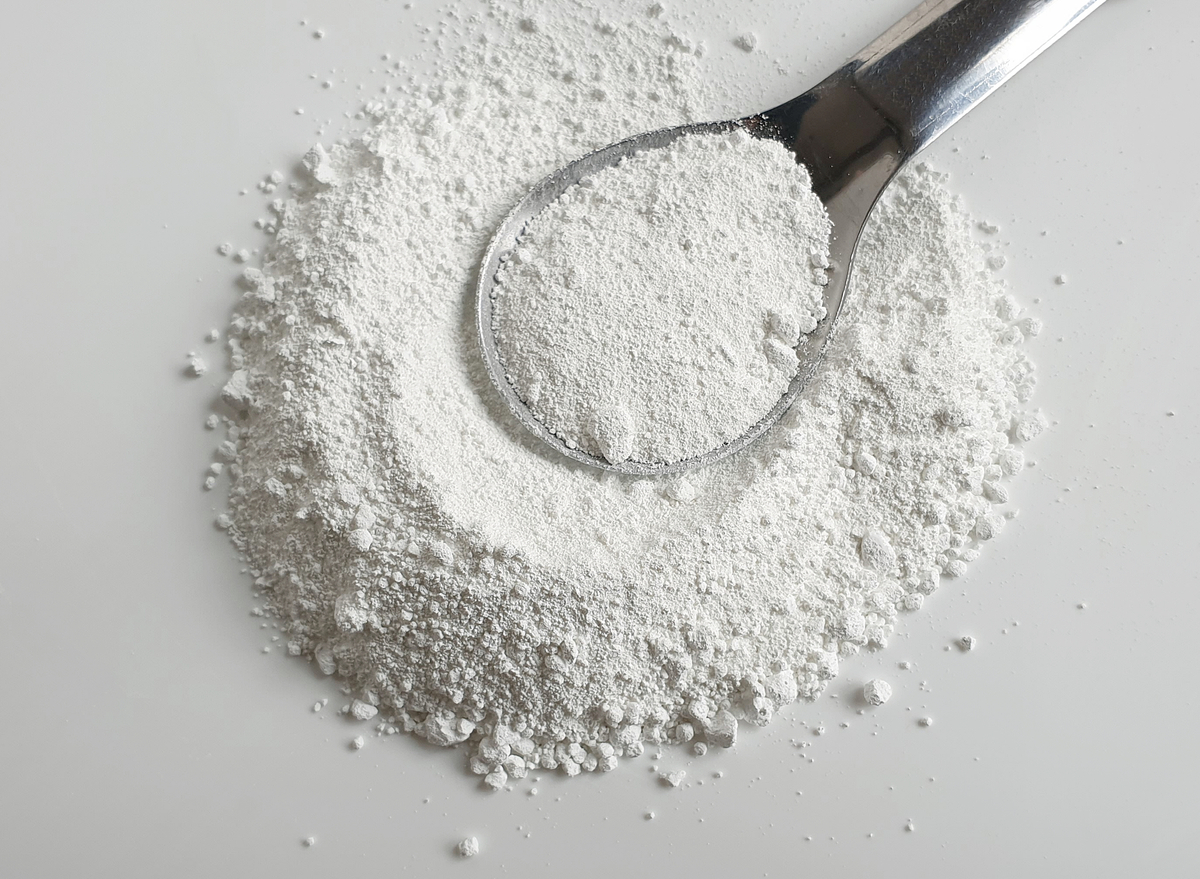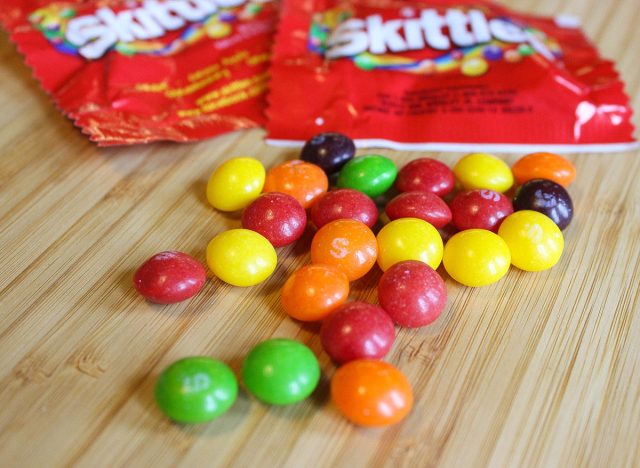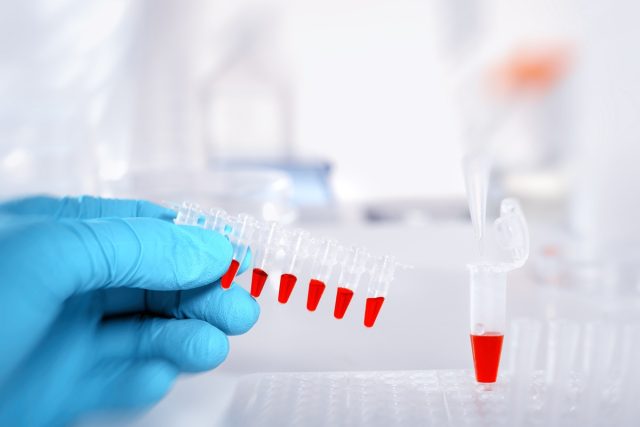What Is Titanium Dioxide? And Why It's in Your Food

From food dyes to preservatives, you're probably curious about what ingredients are being put in the everyday foods on your grocery shopping list… and why they're even there in the first place.
One of these additives is titanium dioxide (E171), an odorless powder that enhances the bright white color or opacity of foods. It's often found in chewing gum, candies, pastries, chocolates, coffee creamers, and cake decorations. It's also used in food packaging to preserve the shelf life of a product. But, should you be concerned about consuming it?
Though the Food and Drug Administration (FDA) categorizes titanium dioxide as "Generally Recognized as Safe," other organizations have issued warnings. Keep reading to learn more about this common food additive, what it's used for, and how it may impact your health.
Related: The #1 Best Juice to Drink Every Day, Says Science
What Does Titanium Dioxide Do?

Simply put, titanium dioxide has been used in the food industry for coloring purposes.
As Aurora Meadows, MS, RD, a nutritionist for the Environmental Working Group, previously told Eat This, Not That!: "Titanium dioxide is a synthetic food colorant that is also used to make paints and consumer products bright white." Meadows also explained that the chemical is used in candies like Skittles in the same way a primer is used on a wall before you paint it. You prime the wall before adding color, and the same concept can be applied to how food manufacturers make the color of a Skittle "pop."
Aside from its use in foods, titanium dioxide is widely used as a color-enhancer in cosmetic and over-the-counter products like lipsticks, sunscreens, toothpaste, creams, and powders. It's particularly useful in sunscreen as it has UV resistance and helps block the sun's rays.
In beauty products, however, the additive is usually found as nano-titanium dioxide, which is smaller than the food-grade version. This leads to the question…
How Safe Is It to Consume?

In May 2021, an explosive study from the European Union's top food safety agency concluded that titanium dioxide should no longer be considered safe as a food additive, citing its ability to damage DNA, plus the agency's inability to deem any amount as safe to ingest on a daily basis.
"A critical element in reaching this conclusion is that we could not exclude genotoxicity concerns after consumption of titanium dioxide particles," said Prof Maged Younes, chair of EFSA's expert Panel on Food Additives and Flavourings (FAF). Genotoxicity refers to the ability of a chemical substance to damage the genetic material of cells.
For similar reasons, The International Agency for Research on Cancer has listed titanium dioxide as a Group 2B carcinogen risk—AKA an additive that may be carcinogenic but currently lacks sufficient animal and human research in order to be confirmed.
Some research in rats has found that titanium dioxide can accumulate in the liver, spleen, and kidneys. Other research has linked it to irritable bowel syndrome. That said, most studies use doses higher than what the average person would typically consume, so the scientific community cannot definitively say whether or not titanium dioxide is harmful to human health.
Still, in response to the 2021 findings by the EU's food safety agency, the Environmental Working Group took a stand, calling on the U.S. Food and Drug Administration to consider a ban on titanium dioxide.
Interestingly, many pet food companies have already passed on using it in their products. Since May 2019, for instance, most pet food at Petco cannot contain titanium dioxide.
How Can You Avoid Eating Titanium Dioxide?

At this time, titanium dioxide is still added to thousands of food products in the U.S.—to the tune of more than 3,000 ultra-processed foods—due to the FDA's stance that it's allowed under certain conditions and in small amounts.
It's a different story in other countries, though. In 2020, France banned titanium dioxide, which pushed lobbyist groups to urge the European Commission to prohibit the additive across the European Union. As a result, titanium dioxide is now banned in EU territories, like Northern Ireland. Switzerland has followed suit and is enacting a ban on the additive starting in September 2022.
However, according to Food Safety News, the UK and Scotland have recently chosen not to ban titanium dioxide from their food supply.
When it comes to your own kitchen and pantry, you can keep an eye out for titanium dioxide, or "E171" on ingredient labels in order to know which packaged foods contain the additive. Among some of the most popular products are Skittles, Starbursts, Jell-O, Sour Patch Kids, and Little Debbie baked goods.
For more on additives, check out why the FDA Is Under Fire For Not Regulating Thousands of Chemicals in Your Food.









